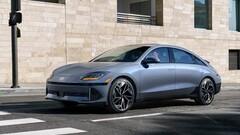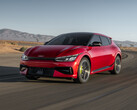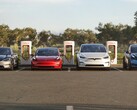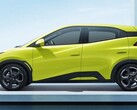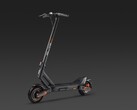CrossCheck – when rivals clash
1. Should you buy an electric crossover or a fastback sedan?
This might seem like an obvious distinction to point out, but it has many implications when it comes to both the driving experience and the target audience. While both the Ioniq 5 and Ioniq 6 are based on Hyundai's E-GMP platform, meaning the majority of the weight sits pretty low down in the chassis, the Ioniq 5's taller body is bound to raise the centre of gravity slightly. This is true for almost all SUVs and crossovers, but a higher centre of gravity causes body roll in corners, reduces cornering precision, and puts more demand on the suspension components.
Aside from agility, the shape of the vehicle has a tremendous impact on aerodynamics, which in turn affect efficiency and range. The range ratings of the Hyundai Ioniq 5 and Ioniq 6 are excellent examples of this, with the 77.4 kWh Ioniq 6 SE outperforming the Ioniq 5 SE with the same battery capacity by 22 km (14 miles), according to Hyundai's estimates.
2. The Ioniq 5 is only slightly better-equipped for camping
Buyers can opt for all-wheel-drive on both the Hyundai Ioniq 5 and Ioniq 6. The HTRAC AWD system on the Ioniq lineup is far more geared toward improving the on-road performance, but with 74 kW and 165 kW going to the front and rear axles respectively, and ABD managing traction left to right, it's easy to imagine either Ioniq performing admirably when the terrain is less than favourable. Neither is going to be rock crawling anytime soon — the Ioniq 5 has 15.4 cm (6.1 inches) of ground clearance, which is only ~1 cm (0.6 inches) more than the Ioniq 6 — but a little off-road work shouldn't be too much to handle. The Ioniq 5 does have shorter front and rear bumpers, which will make off-road work a lot less stressful.
The Ioniq 5's 770-litre (27.2 cubic feet) trunk — compared to the Ioniq 6's 317-litre (11.2 cubit feet) affair — is a huge benefit when it comes to weekends away, though. Another major benefit of the Ioniq 5 and 6 during a camping trip is the Vehicle-to-Load (V2L) feature, which can deliver up to 3.6 kW to external devices through a standard three-pronge wall outlet.
3. Different cars for different people at roughly the same price
While US$45,500 nets you similarly-equipped SE trims in both the Ioniq 5 and 6, the Ioniq 5 actually starts at a lower price, with the entry-level SE Standard Range trim at US$41,450. That US$41,450 Ioniq 5 is fairly barebones though, with a range of only 398 km (240 miles) and a single 125 kW motor on the rear axle. The lower entry point of the Ioniq 5 indicates that the vehicle is aimed at a wider audience of SUV buyers.
The pricing of the Ioniq 5 and Ioniq 6 are similar enough, with the Limited trims of both starting at US$52,600, but the styling decisions indicate that they're aimed at different buyers. For all its minimalist styling, pixel-style lighting, and sharp body lines, the Ioniq 5 is still just a practical, compact SUV. The Ioniq 6, on the other hand, seems to be aimed at a more forward-looking audience, with its double spoilers, controversial swept design, and rear-view cameras (in the EU, at least). For many, the Ioniq 5 is going to be a stylish, practical entry into the electric market — a vehicle that strays just far enough from the norm that you are reminded of its electric underpinnings only once in a while. The Ioniq 6, on the other hand, is a loud proclamation of electrification, with very little that doesn't stand out after even a moment's inspection.
Even the best cars have tires that need inflating. Grab the HOTO Tire Inflator Portable Air Compressor, available on Amazon.




